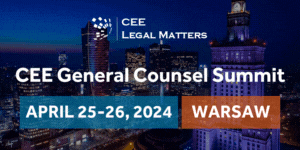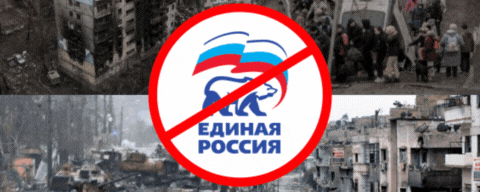Constructing a Rink for the Investment Game in Ukraine
There have been great guests and inspiring speeches made at the recent Ukrainian Breakfast Discussion in Davos. Chrystia Freeland, a famous Ukrainian-Canadian and current Deputy Prime Minister of Canada, in her talk referred to a quote of another prominent Ukrainian-Canadian and the world’s most successful hockey player – Wayne Gretzky: “I skate where the puck is going, not where it has been”.
As in addition to outstanding politicians and public figures there literally was the crème de la crème of the international investment community speaking at the breakfast, let us consider what they said and what they meant by saying it, as well as other issues, which are important for building a metaphoric “rink” for the investors to be able to play their game in Ukraine.
What do the investors really mean?
Most of the investors who attended the Ukrainian breakfast in Davos were either from the asset management business or, as David Rubenstein of the Carlyle Group (who also made a short speech at the breakfast) says, from the “higher calling of mankind – being private equity”. What unites them all is that most of the money they manage and invest is other people’s and other institutions’ money.
Perhaps, the most interesting and important part of the discussion about the vision of how investments will be made in Ukraine came from Larry Fink, the CEO of BlackRock, the world’s largest asset manager. Mr. Fink and BlackRock have been heavily involved in discussions with President Volodymyr Zelensky about not just framing, but also implementing the organizational structure of the future investment flow into Ukraine.
In his speech Mr Fink made the following key accents:
- Building a new and modern Ukraine is to be done by building a capitalistic system in the country;
- Future flooding of capital into Ukraine will not be philanthropy;
- Ukraine will need to be turned into a place with great results where investors will be making fair and just returns;
- Ukraine must become a country that innovates, a leader in new technologies and a leader in decarbonization;
- Investments to rebuild Ukraine, which are estimated in at least USD 750 billion, will need to come from the public sector, international financial institutions and private sector.
The latter point has also been confirmed by David Salomon of Goldman Sachs who said that building modern Ukraine cannot happen without the public sector and public money partnering with private money.
One should recognize the following takeaways from the above observations of Mr Fink:
It is important that the discussions are aimed at capitalism and not so much on philanthropy, although in developed countries both of these go together. The author remembers an observation made some years ago by one of the Ukrainian diaspora representatives from North America who, after years of struggling with his investments in Ukraine, said that it is worth helping Ukraine in a way of philanthropy, but not investing in Ukraine. Well, that must change, and that is what Mr Fink, who although has not yet invested in Ukraine, really meant.
Investments, both foreign and domestic, are made with the purpose of making returns. A return may come either in the form of a profit or in the form of the value growth of the investment made. Unless there is a reasonable expectation of this incentive, no investor will be taking the risk of investing in Ukraine.
Making returns is particularly important as investors, such as BlackRock, Carlyle, Goldman Sachs and the like, by investing other people’s and institutions’ money, are bearing a fiduciary obligation before their own clients whose money they are investing. Those clients range from individuals to pension funds, insurance companies and even sovereign wealth funds.
Although Mr Salomon mentioned in his speech that financial institutions around the globe have an obligation to participate in and support the rebuilding of Ukraine, let us not be naïve, this will not happen unless those financial institutions are able to conclude that there is a chance for them to make those returns and certainly not to lose their investments.
What are the ways of making investments work?
All of the gentlemen quoted above were referring to partnering between public and private sectors. In this regard, not only did they mean that there would need to be partnering between international public and private sectors, but also there will be a need for partnering between Ukrainian public sector and foreign private sector.
Thus, the instrument of public-private partnership in which the public or state side provides the asset that needs to be rebuilt or built from scratch, and the private side invests its money, time and expertise in doing this, will play a vital role.
The good news is that Ukraine has developed a framework and regulations for public-private partnerships and there have even been a few of them implemented shortly before the outbreak of the war.
However, there is one paradigm that will need to be changed in the philosophy of Ukrainian public-private partnership – the return of private investors and the ability for them to build value and benefit from that value, will need to be not just the interest of the private investor, but of the public investor side too. On the other hand, Ukraine’s interest in such a situation will be that the value will be created in Ukraine and will be serving Ukrainian people.
Furthermore, the state side will need to go to one more extreme and explore the ways for it not to be present in the investment projects at all. Even if present, the state side will need to limit its exposure to providing concessions of the assets to private investors and establishing transparent and consistent regulatory framework for these partnership projects.
Implementation of these changes would be a step toward Ukraine’s response to Christie Freeland’s statement to other states that they need to start looking at Ukraine differently, as it has never been done for the past thirty years.
So what is the structure of the rink for investments?
When it comes to building the structure of the rink on which investors will be “skating to their pucks”, another representative of the global investment community, although he did not attend the Ukrainian breakfast in Davos, can be referred to.
As the author of this article is one of the students at the Master of Global Management program at the newly established American University Kyiv, studying at the program gave the students a privilege to have a lecture and learn insights firsthand from General David H. Petraeus. In the past, General Petraeus was a legendary US army commander, a war hero and a former director of the CIA.
Currently, General Petraeus is a partner at KKR, the global private equity firm that can be credited for founding the industry of private equity. In addition, General Petraeus is a Chairman at KKR Global Institute, a think-tank organization of KKR which supports the private equity firm in making its investment decisions.
According to Gen. Petraeus, the structure of the Ukrainian rink for investments must consist of the following elements:
Element 1: Working out effective security guarantees. While this is something the Ukrainian Army and the allies of Ukraine are working on, hopefully, Ukraine’s victory will also be sealed by the rebuilding of international law and order. The latter is certainly something that is in the hands of the international community.
Element 2: Rule of law and credible judicial process. This element really relates to Ukraine and Ukrainian state authorities. In fact, when Mr Fink refers to capitalism, he also means the rule of law, as capitalism cannot exist without it.
Element 3: Integrity in government and lack of corruption risk. While this element correlates with the rule of law, it is mainly about the accountability of the government. The liability for corruption related crimes must be as severe as for state treason. Not only is corruption the enemy of investors, both foreign or domestic, but it is also the first ally of the state-aggressor in Ukraine.
Element 4: Reasonable government functions in the form of decent productive bureaucracy and not in the form of appalling bureaucracy. The way to achieve this element is to ensure that the key purpose of the state apparatus is to act as the service provider to private sector and investors. It is the private sector that produces wealth, while the state apparatus provides a service to distribute part of the produced wealth across the nation.
Element 5: A level playing field for all businesses and investors and they being subject to the same set of rules. Hockey can serve as a great example of the level playing field: the rules of the game are the same for both teams, and it is the better one that wins the game. The same must exist for businesses whether state-owned or privately owned. Otherwise, not only will there be a risk of abuse, which we had seen in the oligarchic model, but there will also be a significant risk of fraud, whether from state or private counterparties.
Implementing these elements, and building the Ukrainian investment rink based on them, will give the necessary assurance to foreign as well as domestic investors to take business risks and spend their time and money on building their successful businesses in the country, and moreover, the successful country. Achieving this must be the first priority for the Ukrainian Government and state authorities.
Furthermore, the successful implementation of these elements will be a key to building what President Zelenzky and Mr Fink discussed as the vision for the future Ukraine: Ukraine, as the country that innovates, as a leader in new technologies, a leader in decarbonization and an environmentally friendly country.
by Taras Dumych, partner at Wolf Theiss Kyiv
Posted in Recovery Talks






